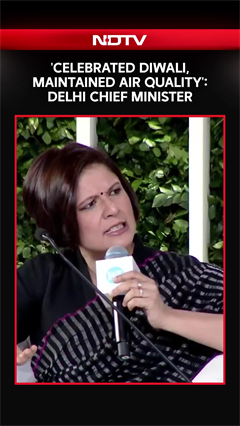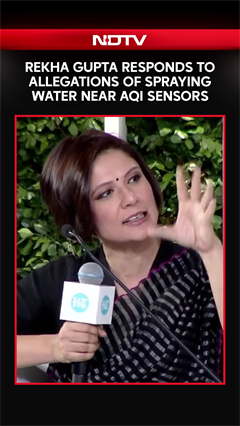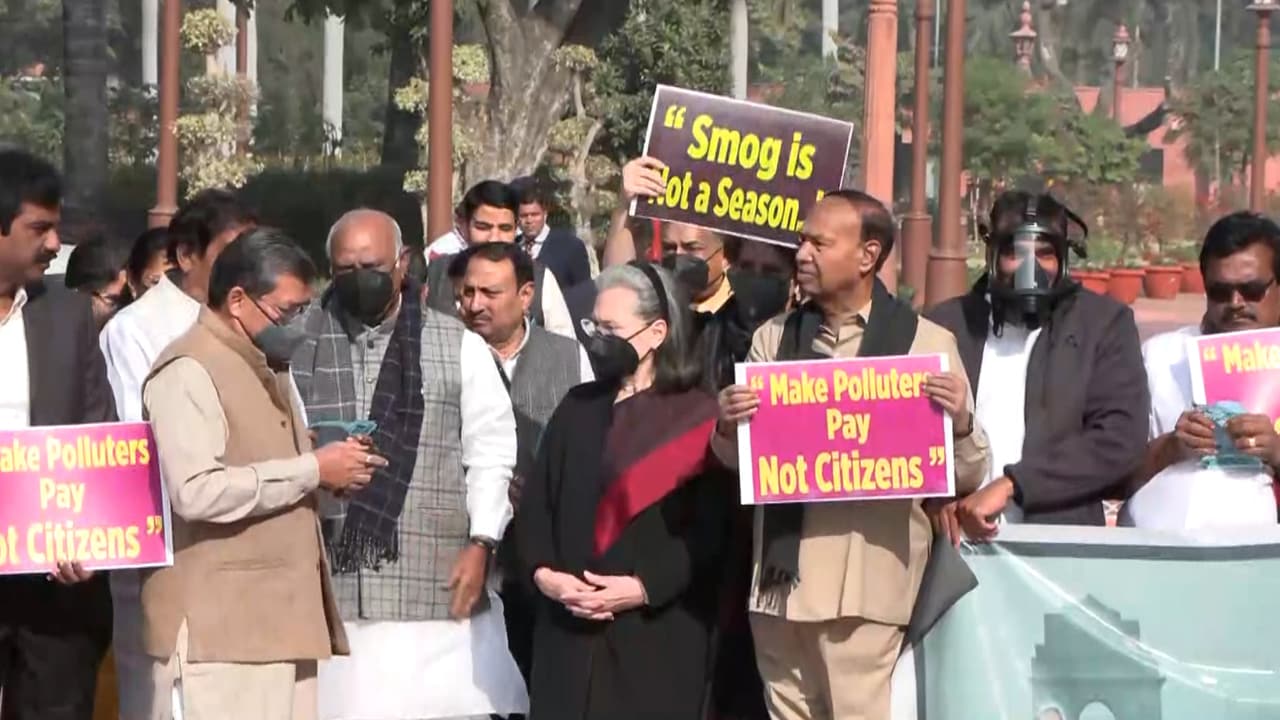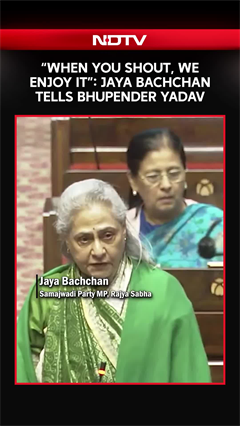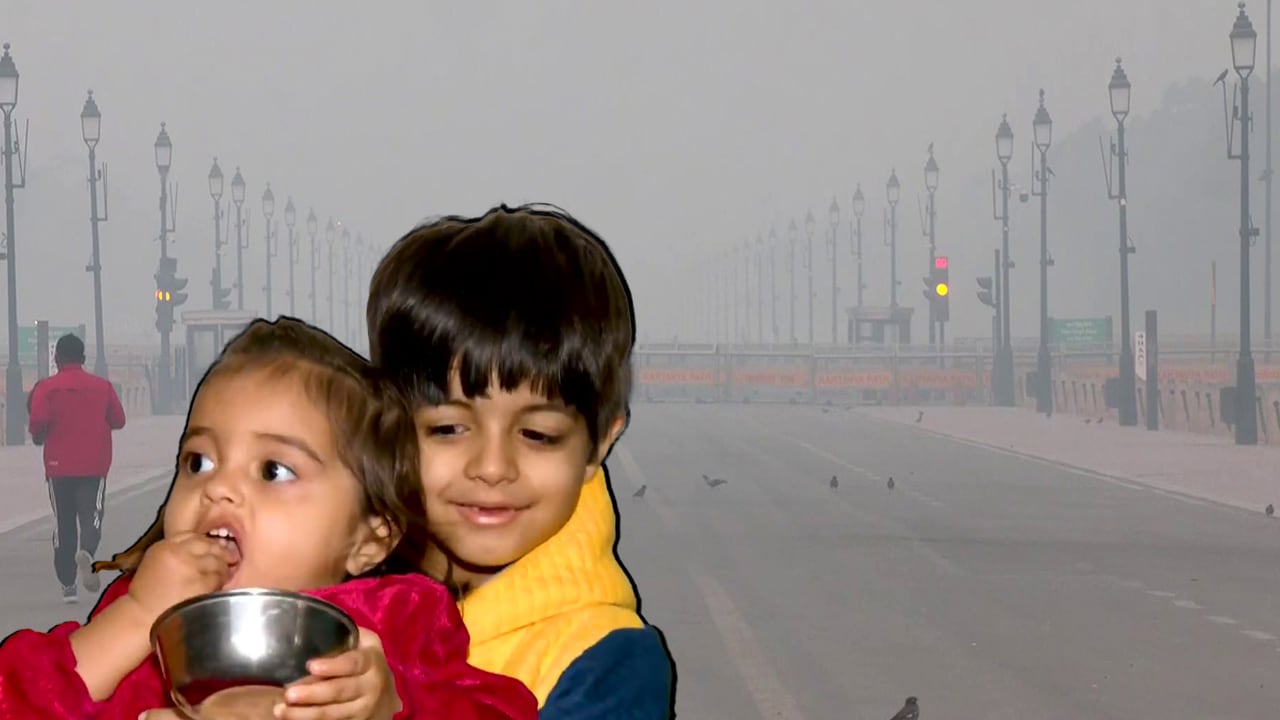- Home/
- Alarming AQI: Air Pollution Rising Amid Diwali Celebrations; Here's How To Stay Safe
Alarming AQI: Air Pollution Rising Amid Diwali Celebrations; Here's How To Stay Safe

Diwali is known as the festival of lights but there's another inevitable factor that comes along with the glitz and glam of Diwali celebrations: poor air quality. Diwali sees an increase in air pollution due to a spike in fire crackers. These fire crackers release high levels of harmful materials in the air. Some of these pollutants include sulphur dioxide, nitrogen oxides, heavy metals as well as particulate matter (PM2.5). In fact, over the last week, Air Quality Index reports have already suggested an immediate shift in the air quality. Air Quality Index also known as AQI is a tool that can help us measure air quality. Being able to calculate and measure air quality can help us predict the damage it can do to our health. According to AQI.IN, Delhi's AQI has been listed at 183 as of 16th October 2025. 183 on the meter is qualified as “unhealthy” and the AQI is predicated to reach beyond the meter at 301+ which in denoted “hazardous” for health.
Let's understand how can these harmful pollutants affect our health.
How does air pollution during Diwali affect your health?
A landmark study from Karolinska Institutet using data from 2009-2019 estimated that 3.8 million deaths in India over that period were linked to air pollution exceeding India's own air quality guidelines (PM₂.₅ > 40 µg/m³). Even short exposure to PM2.5 matters. Air pollution during Diwali can cause acute health issues such as increased breathlessness, chest discomfort, dizziness from low oxygen intake, poor sleep, fatigue and so on. WHO's global air-quality guidance warns that both short-term and long-term exposures to PM2.5 increase risks of respiratory illness, heart attacks, strokes and other harms, and that health effects occur at lower concentrations than previously appreciated. That's why even brief Diwali spikes carry real public-health consequences.
This spike in poor air quality is further worsened by the climactic changes. Cold weather and slower air movement adds to the predicament. To lower the damage, Central Pollution Control Board has implemented rules for Diwali this year. It has permitted use of only green crackers in Delhi-NCR and must only be used from 18th to 21st October between 6pm to 10pm. Besides government initiatives, certain prevention steps can help minimise your risk of damage from the poor air quality. Below we share tips to help you stay safe from poor air quality this Diwali.
Follow these tips to stay safe from air pollution this Diwali
1. Monitor local AQI and plan accordingly
When AQI (especially PM2.5) climbs into the “poor” or “very poor” range, minimise outdoor time, especially evenings and nights around Diwali. CPCB and state SPCBs publish monitoring and special reports around the festival.
2. Avoid crowded outdoor fireworks displays
Personal exposure according to studies can multiplies risk from proximity so stay inside or afar as much as possible. Keep kids, infants and older adults indoors since they are at a higher risk of larger damage from the air pollution.
3. Use well-fitting masks for brief outdoor trips
A proper N95/FFP2 respirators reduce inhaled fine particles when used correctly and is helpful for unavoidable short exposures. Always buy certified masks and follow fit instructions. Surgical or cloth masks give limited PM2.5 protection.
4. Reduce indoor infiltration
Close doors or windows during peak pollution hours, use door-draft strips, and avoid indoor burning like candles, incense, mosquito coils on high-pollution days. If possible, run a HEPA-filter air purifier in living and sleeping areas as these substantially lower indoor PM2.5.
5. Manage asthma or COPD effectively
People with chronic respiratory disease should maintain inhaler or medication regimens, have a written action plan, and seek early medical advice for worsening symptoms.
6. Limit physical exertion outdoors
Heavy exercise increases the volume of air and pollutants you inhale. Postpone strenuous outdoor workouts during and immediately after Diwali.
7. Public measures matter
Evidence shows “green cracker” formulations reduce some emissions but volume, enforcement and product integrity matter. Long-term solutions require policy, monitoring and public adoption of low-emission practices.
Diwali's fireworks produce short, sharp pollution spikes that carry real health consequences, not just a nuisance. The scientific record is clear: PM spikes, metal-laden particles and associated toxic gases worsen respiratory and cardiovascular risk, particularly for vulnerable people and can extend into an aggravated winter pollution episode. Simple steps like the ones mentioned above can reduce harm immediately.
As Diwali approaches this year, the damage is beginning is appear.
Disclaimer: This content including advice provides generic information only. It is in no way a substitute for a qualified medical opinion. Always consult a specialist or your doctor for more information. NDTV does not claim responsibility for this information.
References
Pre-to-post Diwali air quality assessment and particulate changes, National Institutes of Health, 2023.
Personal exposures to particulate matter <2.5 μm in mass during fireworks events, National Institutes of Health, 2019.
The Diwali festival: short-term high effect of fireworks on air quality and health risk assessment, National Institutes of Health , 2024.
Potential impact of fireworks on respiratory health, National Institutes of Health, 2014 (review).
WHO Global Air Quality Guidelines: particulate matter (PM2.5 & PM10), NO2, O3, SO2, CO, World Health Organization, 2021.
Latest Stories
- Press Trust of India | Monday December 08, 2025 , New Delhi
Delhi's air quality remained locked in the 'very poor' category on Monday, with the air quality index (AQI) staying above 300, while forecasts suggest that pollution levels are likely to deteriorate further.
- Reported by Ashwine Kumar Singh | Monday December 08, 2025 , New Delhi
Delhi Chief Minister Rekha Gupta's remarks about the government using mist sprayers to contain pollution at hotspots has drawn a stinging response from her predecessor Arvind Kejriwal.
- Written by Rupashi Chhabra | Monday December 08, 2025
Maintaining lung health is essential for longevity. Here are five simple steps to perform an anti-pollution lung detox for long-term well-being.
- Reported by Ishika Verma | Saturday December 06, 2025
New Delhi: Two days after Chief Minister Rekha Gupta held a high-level review meeting, the Delhi government on Saturday formally notified the constitution of a new Expert Group on Air Pollution Mitigation and a High-Level Implementation Committee.
- Saturday December 06, 2025 , New Delhi
Delhi Chief Minister Rekha Gupta on Thursday claimed that the capital had "celebrated Diwali and maintained air quality."
................................ Advertisement ................................
Latest Videos
Opinion
Blog | Well Done, Delhi. You've Turned Lung Sacrifice Into A Badge Of HonourSaikat Kumar Bose
Monday November 10, 2025Till some years back, Delhiites would ask angry questions to those in power about the capitals annual tryst with toxic air. This has changed. Those in the driving seat dont see the need to answer now.
Opinion | Why Indians Have Just Given Up On Air Pollution CrisisTanushree Ganguly
Friday December 20, 2024While some may argue that people in Delhi are now more aware of air pollution than they were a decade back, my rebuttal would be that awareness does not mean that people are concerned.
Opinion | You Must Outrage Over Filthy Air More Than Once A YearJyoti Pande Lavakare
Tuesday December 10, 2024Delhi welcomed us with monsoon rains and mangos. We were home. Fast forward a couple of years, in the winter of 2012, I found myself in denial about something other parents, mostly expats, were calling toxic air.
Opinion | Delhi's Air Pollution Situation Is Like A Bad MarriageNishtha Gautam
Friday November 22, 2024On a good day, such as today, the AQI reading in Delhi is 407. We are jubilant at the sickly sunshine trickling through the slightly dissipated smog. At least its not 1600.
दिवाली... पराली... सियासी जुगाली!Ashwini kumar
Monday November 18, 2024दिल्ली-एनसीआर में प्रदूषण का समाधान तो आज तक मिला नहीं. हर साल चिंतित होकर हम-आप सांसों की तकलीफ के साथ-साथ दिल और ब्लड प्रेशर के मरीज भी क्यों बनें?








